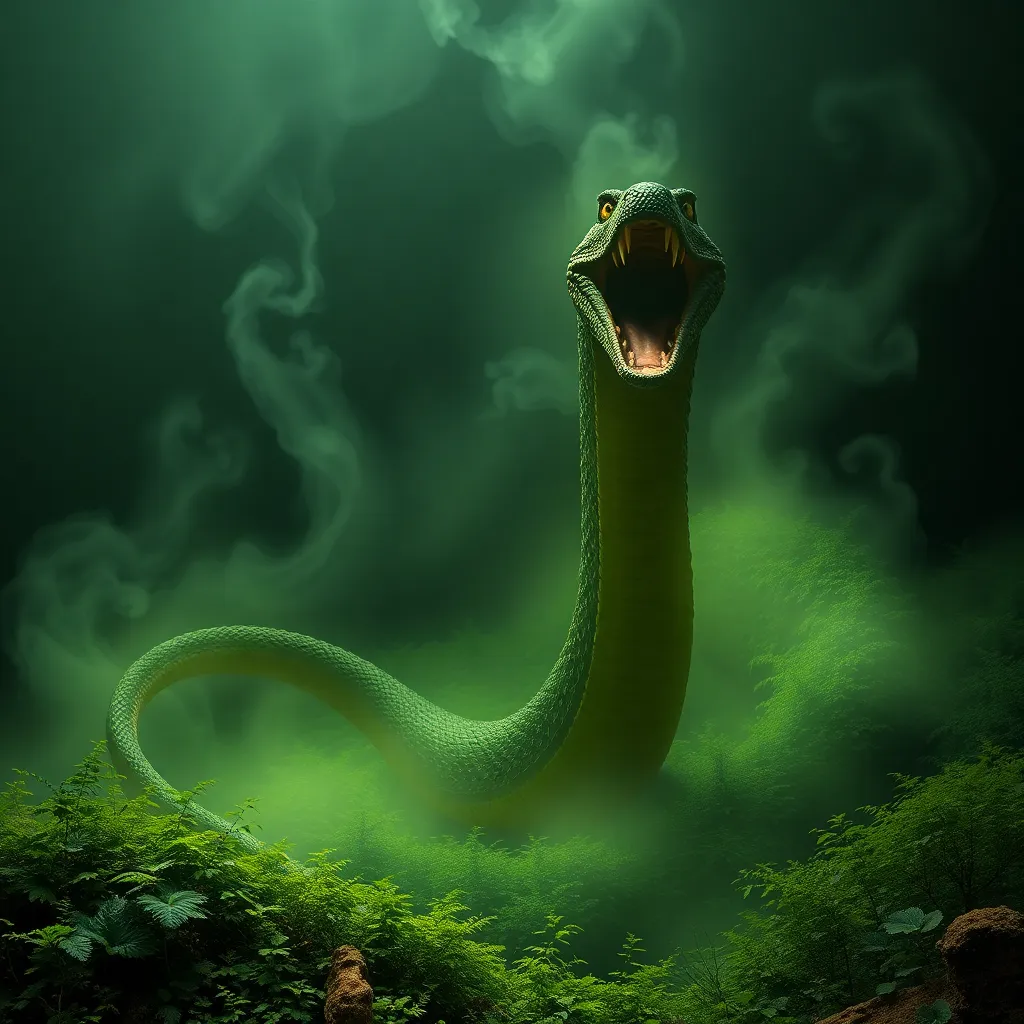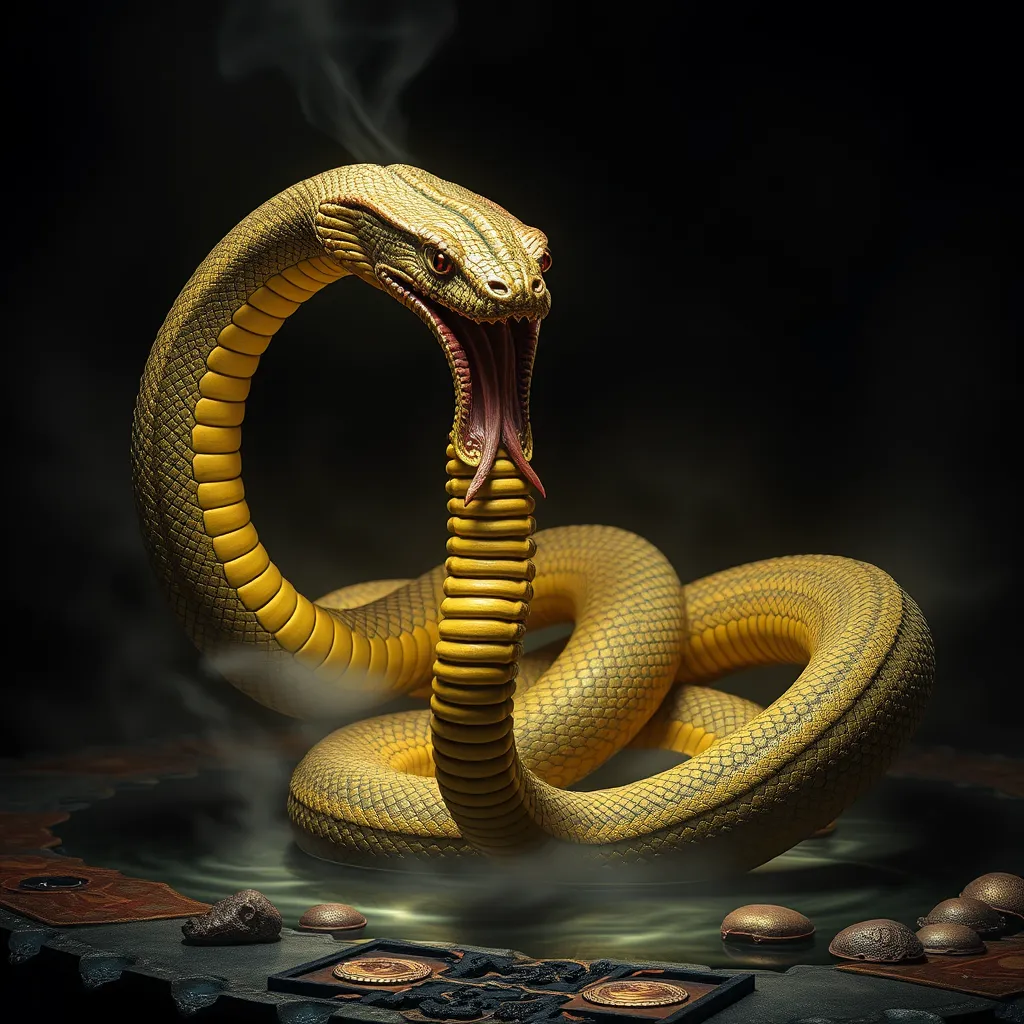The Griffin’s Connection to the Four Sacred Animals of China
I. Introduction
The Griffin, a creature of myth and legend, has fascinated cultures around the globe. Known for its majestic body of a lion and the head and wings of an eagle, the Griffin embodies strength, courage, and a guardian spirit. This article aims to delve into the connections between the Griffin and the Four Sacred Animals of China: the Dragon, Phoenix, Tortoise, and Qilin. By exploring these relationships, we can uncover deeper meanings and cultural significance that span across different mythologies.
II. The Griffin: A Mythical Creature
The Griffin has its origins in ancient mythology, with roots traceable back to the civilizations of the Near East and Classical antiquity. It is often depicted as a powerful creature, symbolizing the union of the king of beasts (lion) and the master of the skies (eagle).
A. Description and origins of the Griffin
According to mythology, the Griffin is a hybrid creature that combines the ferocity and strength of a lion with the majesty and swiftness of an eagle. This majestic being has been featured in various cultures, from the Greeks to the Egyptians, often serving as a protector of treasures and sacred places.
B. Symbolism of the Griffin in various cultures
The Griffin is a multifaceted symbol representing various attributes:
- Guardianship: Often seen as a protector against evil.
- Strength and Courage: Its lion-like body symbolizes bravery.
- Wisdom: The eagle’s head represents keen vision and intelligence.
C. Its role in heraldry and art
Throughout history, the Griffin has been a popular motif in heraldry, symbolizing nobility and valor. Its image can be found on coats of arms, emblems, and various artworks, often representing the virtues of its bearers.
III. The Four Sacred Animals of China: An Overview
In Chinese mythology, the Four Sacred Animals hold significant cultural and spiritual meanings. They are the Dragon, Phoenix, Tortoise, and Qilin, each representing different aspects of life and nature.
A. Introduction to the Four Sacred Animals
These four creatures are more than just mythological beings; they embody principles that are deeply woven into the fabric of Chinese culture:
- Dragon: Symbolizes power, strength, and good fortune.
- Phoenix: Represents rebirth, beauty, and grace.
- Tortoise: Stands for wisdom, longevity, and stability.
- Qilin: Embodies peace, prosperity, and good luck.
B. Historical significance and cultural meanings of each animal
Each of these animals carries historical significance, often appearing in literature, art, and folklore. They are seen as auspicious symbols that bring balance and harmony to the world.
C. Their place in Chinese cosmology and mythology
In the context of Chinese cosmology, these animals are believed to maintain the balance of the universe, influencing everything from the natural world to human affairs.
IV. The Dragon: The Might of the Griffin
The Griffin and the Dragon share many similarities and symbolize power and protection within their respective mythologies.
A. Comparison of the Griffin and the Dragon
Both creatures are often seen as guardians and symbols of strength. The Griffin, with its lion and eagle traits, parallels the Dragon, which is often depicted as a serpentine creature with the ability to fly and control water.
B. Symbolic relationships: power, strength, and protection
Both creatures embody:
- Power: They are revered in their cultures as symbols of authority.
- Protection: Both the Griffin and Dragon are seen as protectors of treasures and sacred places.
- Strength: Their fearsome appearances evoke awe and respect.
C. Shared attributes and roles in mythology
In various myths, both the Griffin and Dragon are depicted as noble beasts that assist heroes or serve as protectors against evil forces.
V. The Phoenix: Rebirth and Transformation
Parallels between the Griffin and the Phoenix highlight themes of resurrection and renewal that are central to both creatures.
A. Parallels between the Griffin and the Phoenix
While the Griffin symbolizes strength and protection, the Phoenix represents rebirth and transformation. Both creatures signify a journey through challenges towards enlightenment.
B. Themes of resurrection and renewal
The Phoenix’s cycle of death and rebirth resonates with the Griffin’s role as a guardian, suggesting that through adversity, strength is gained.
C. Artistic representations and cultural narratives
In art, both the Griffin and Phoenix are depicted with vibrant colors and majestic forms, symbolizing the beauty of life and the power of transformation.
VI. The Tortoise: Wisdom and Longevity
The Tortoise and Griffin share connections rooted in wisdom and endurance.
A. Insights into the Griffin’s connection to the Tortoise
The Griffin, although more ferocious, has traits that align with the Tortoise’s wisdom. Both creatures are seen as wise protectors in their mythologies.
B. Symbolism of wisdom and endurance
The Tortoise’s long lifespan represents endurance, which parallels the Griffin’s role in guarding sacred knowledge and treasures.
C. How these traits are reflected in Griffin mythology
In various tales, Griffins are often depicted as not just powerful beasts but also as wise creatures that impart knowledge to those who seek it.
VII. The Qilin: Harmony and Prosperity
The bond between the Griffin and Qilin underscores themes of peace and prosperity.
A. Exploring the bond between the Griffin and the Qilin
Both creatures are seen as auspicious and benevolent, promoting harmony in their respective cultures.
B. Themes of peace, prosperity, and good fortune
The Qilin is often associated with the arrival of wise rulers and prosperity, much like the Griffin’s role in safeguarding treasures and maintaining balance.
C. The role of both creatures in bringing balance to society
In mythology, both serve to uphold societal order, acting as mediators between the earthly and divine realms.
VIII. Conclusion
The exploration of the Griffin’s connections to the Four Sacred Animals of China reveals a rich tapestry of symbolism and cultural significance. Each creature, while unique in its attributes, shares common themes of strength, wisdom, and protection. Understanding these connections enhances our appreciation for the mythologies that shape our worldviews. We encourage readers to delve deeper into these fascinating mythological connections across cultures, as they provide valuable insights into human beliefs and values.



